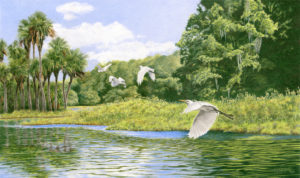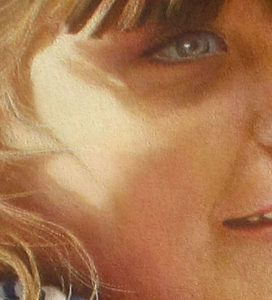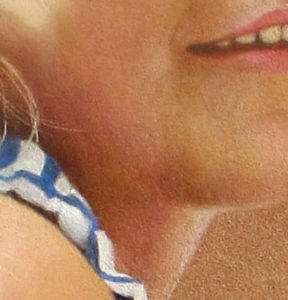A Discussion on Detail: Continuing with some observations on edges
My discussion this week is on edges. Judicious use of detail is closely related to the handling of edges. Edges, as most of you know, refers to the junction between two shapes – where one shape ends and another begins. Objects that have clearly defined edges usually are more detailed than objects that are not clearly defined. So, detail and edges have an intimate relationship.
In my love affair with detail I never gave edges any thought – or very little thought. I remember references to edges but I never stopped and said “Hey, that’s important”, not until recently, when I began to think seriously about why my paintings seemed unprofessional to me, not until I thought seriously that I was copying scenes rather than interpreting them. I’ve found lots of information on edges and how important they are to a composition. How they can be used to draw attention to the important places in the painting. I’m amazed that there have been discussions about the importance of edges and detail in all my books and I somehow missed them, or overlooked them all this time. It’s mind blowing. It’s been almost like an epiphany!
I mentioned in my previous post that, as artists, we try to emulate to some degree, in a painting, how we see, and therefore focus attention on specific subjects. When we are looking at a scene before us, we normally focus on a particular object of interest in our field of vision. That object, the thing we’re interested in, is in fairly sharp focus. Everything else around it is a bit hazy or fuzzy. Everything in our field of vision is not in sharp focus and detailed. That is interesting and makes a lot of sense. When we paint a scene, we want the viewer to focus on a particular aspect of that scene, and we use various compositional methods to get the viewer’s eyes where we want them. By having everything in sharp focus, by having sharp edges everywhere, we are fighting against all the other tools we’re using to guide the viewer’s attention.
Edges come in a variety of forms – hard, soft, lost and found, and everything in between. Depending on how edges are used they can define primary focal points, secondary supporting elements and areas of lesser importance. Hard edges draw the most attention. They stand out because they contrast sharply with more diffuse or hazy objects next them. The eye is naturally attracted to hard edges, so hard edges at the focus further delineates the subject. In most of my paintings I unconsciously used hard edges everywhere. By doing so, I was calling attention to everything, even though I was trying to draw the viewer’s eyes to a particular spot. It was like drawing the viewer’s eyes to a focal point and, at the same time, throwing obstacles in the path. I was making it harder to get to the destination. Look at my painting “Withlacoochee Flight” There are hard edges everywhere. It makes it harder for the egrets to stand out. You tend to look at everything when the focus should be on the birds. I especially should have softened the edges of the palms in the middle ground. Their sharp edges shout for attention. The fewer hard edges the better.
Soft edges are the most common. Look at the portrait of “Raine” below. I’ve included a detail of the cheek. The change in tone is gradual – no sharp delineation. That’s a soft edge. Soft edges don’t draw attention.
Lost edges are edges that are so close in tone that you can’t see where one edge ends and another begins. Here, again, I show a detail from Raine illustrating the lost edge. (I see that I haven’t totally ignored edges in my paintings, even if they were unconsciously included). Notice how the side of the jaw blends into the neck near the blouse. The edge is lost. The tones of each are so similar that they blend into one another. Where the edge begins to show, out near the chin, can be considered a found edge. A found edge is the reappearance of an edge that has been lost. It can be soft or hard. In this case it is somewhere in between.
The focal point of the painting is first established through composition. The focus can be enhanced by the use of edges. So, if you follow good composition principles and use a variety of edges, your painting will improve. That’s exciting.
As I go back over some these paintings I see that I have edges – more than I thought. But I haven’t used enough. And I haven’t been consciously introducing edge variety and consciously limiting detail. When I am creating a painting I must think about edges, where they can be used to best advantage. I must limit detail to the most important areas. If I am going to add detail, I should be judicious and stingy about it, and add it only where I want my viewer’s eyes to be attracted – in other words, where the focal point is. That’s not to say that I should have everything except the focal point fuzzy. I just have to be sure that I am not drawing attention away from the focus. I have to be more attentive to edges and detail in the creative process and avoid just copying a scene. A painting is much more than a picture.


